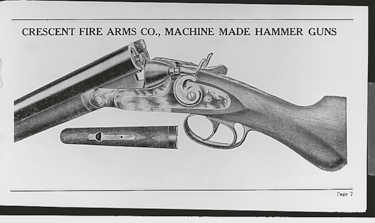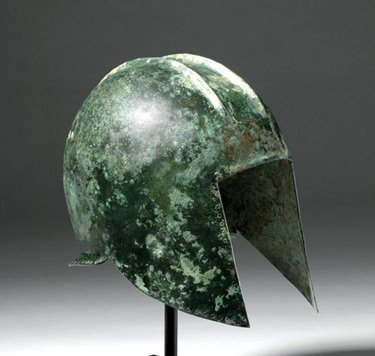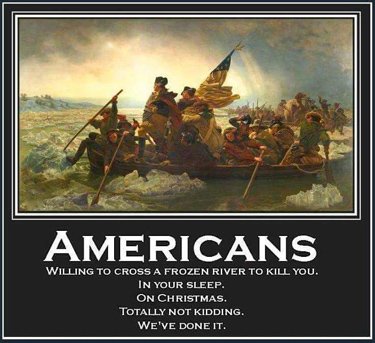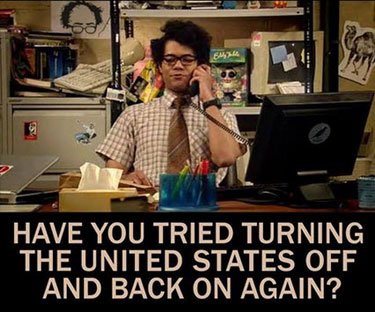“This Land Is My Land; It Isn’t Your Land.”
America, Kevin Costner, Private Property, Yellowstone
Is This a Great Country or What?
Amateur Gunsmithing, America, Crescent Shotguns, Guns, Tinkering

A Crescent Shotgun, manufactured 100+ years ago by the Crescent Fire Arms Company of Norwich, Connecticut. H.D. Folsom Arms, 314 Broadway, New York, N.Y. owned Crescent from 1893 to 1930, when they sold Crescent to Savage.
Any gun nut has undoubtedly seen some rusty, dusty old Crescent shotguns being sold as wall-hangers in Antique shops.
I was looking at the Double Gun Discussion Boards this morning and came upon the following (edited and abbreviated) thread:
Alan writes:
A few years back #1 son was given an old shotgun that had been laying on the floor of a barn. The stock was completely rotten. He stuck it in his own shed and gave it to me a year or so ago. I finally got around to nickeling the rust off of it, squared off the barrels that had been hacked back to 27″ and I’m working on getting a new stock. The fore end is still in good shape. All internals except the left trigger are in good shape. I need to find a trigger guard and a left side hammer.
Oh, and yes, I know I am going to have the most expensive tomato stake on the block.
————————–
Keith replies:
Alan, if you had asked before you started, my advice would have been to not waste any time on a Crescent… unless you just wanted to practice some gunsmithing techniques before working on something more valuable. They made a ton of Crescents and Crescent Gun Co. variants, and when you see them at gun shows, most have shown they did not stand the test of time very well. Even complete guns that are still in decent condition don’t sell for very much because they have no collector value.
But since you are into it, and it beats just watching TV, you could start by doing searches on Ebay every few days. It’s only a matter of time before another one gets parted out and listed there. Unfortunately, there are a few purveyors of cheap worn out gun parts on Ebay lately that are selling a lot of junk with crazy-high starting bid prices. You have to sort through all that to find someone who isn’t smoking crack when they list their junk. I also see a LOT of Crescent parts in boxes of gun parts at gun shows. Most aren’t labeled, so you need to know exactly what you’re looking for.
————————–
Alan replies:
I know it’s not going to be a collectors item and is certainly not worth the effort monetarily, but, as you pointed out, it is good practice and one of these days …..
and if not, it’ll be like that old fellow down the street who was cutting down a tree. He was having a devil of a time and I stopped and offered to help him, he declined. I insisted, … he stopped and looked me dead in the eye and said, “Alan, I’ve got the rest of my life to cut this tree down…”
I also like working on things that I really can’t screw up. This Crescent fits nicely into that category.
…————————–
And along comes RWTF:
Send me a picture or tracing of the right hand hammer, and include all pertinent dims. I may have a LH hammer in my “cigar boxed inventory” that might work– I have two trigger guard bows at present, both from field grade L.C. Smiths- pre-1913 with the two set screw holes– if that might give you something to work with. I have never worked on a Crescent shotgun, so this is just a “shot in the dark” but if I can assist with this restoration project, OK.
————————–
And then, along comes Mark:
Alan, I have a box of Cresent parts. I am just back from a road trip. Give me a few days to get back in the swing. I don’t think I have any stocks but I may have a forend wood. If you don’t hear from me feel free to rattle my cage.
Think about it. All you have to do is find the right place on the Internet to ask, and you can actually reach people who have parts for (nobody-collects, essentially-valueless) Crescent Shotguns in cigar-boxes in their garage.
And some people think that all you have to do is pass a law and you could ban guns in this country!
Civilization and Barbarism
America, Barbarism, Europe vs, Pascal Bruckner, Violence, Western Civilization

Greek Bronze Helmet, Northwest Greece, late 6th to 5th Centuries B.C.
Pascal Bruckner, in City Journal, contemplates Western Civilization’s contradictory attitudes toward Barbarism and violence.
For two centuries, the bourgeois has been a reviled figure, a kind of abstract prototype of ignominy. The whole history of antibourgeois mythology is a series of anathemas. Violently rejected by the nobility because of his prosaic nature, by the working class for his cupidity, by the artist who despises his enslavement to calculation and utility, the bourgeois is characterized by an ontological baseness. The only fault lacking from his catalog of negative traits was criminality, and since Hannah Arendt, we have known about the very normal bourgeois who ran the Nazi murder machine.
One must be either a monk or a soldier, Joseph de Maistre exclaimed, summing up the grandeur of an Old Regime driven by a few fundamental passions. …
The nineteenth and twentieth centuries responded to the bourgeois flattening-out of ideals and behavior with dreams of shattering catastrophe, a revolution or war that would interrupt the monotonous course of time. “Rather barbarity than boredom,†the French romantic Théophile Gautier cried in 1850. His exclamation would illuminate an entire period of rancor and disgust. Since life under the gray skies of the bourgeois order suffers from the most fetid lethargy, the predatory morality of the aristocrat or the freedom of the savage, proud of his body and his desires, is preferable to it. The conflagration of war took on for many the attraction of the new and sensational, especially after the long period of peace that Europe experienced before 1914 (in the same way that some youths today, bored with life in affluent Europe and America, travel to Syria to join the jihad). Tired of the uniformity and boredom of their lives, Europeans embraced the idea of a thrilling apocalypse—and then made it a horrifying reality.
As a young thinker put it in 1913, “War: why not? It would be amusing.†For many Europeans of the time, war was more than amusing; it represented the most beautiful of syntheses, a combination of barbarian energy with feudal courage. In 1915, the sociologist Werner Sombart contrasted the shop-keeping mentality of the British with the heroism of the Germans, the descendants of the brave Teutonic knights. Adolf Hitler got down on his knees in 1914 and thanked God that war had broken out. He saw it as man’s natural fatherland, a supreme test that would make the trenches a “monastery with walls of fire.â€
To the vulgarity of Nietzsche’s “last man,†the bourgeois devoted to his little pleasures, the whole twentieth century—from T. E. Lawrence to the Red Brigades, via the Futurists and the Freikorps—counterposed a Romanticism of volcanic spirits, impatient to lose themselves in “storms of steel,†in Ernst Junger’s formulation. So many modern intellectuals, from Robert Brasillach on the right to Alain Badiou on the left, revealed a fascination with violence. “I want to live only in extreme situations. Everything that is mediocre exasperates me so much I could scream,†exclaimed the French collaborationist Drieu la Rochelle in 1935, on his way to Moscow after visiting Nuremberg and Dachau. Nine years later, in 1944, he noted in his journal, before committing suicide, how much he admired Stalin, the new master of the world, proven stronger than Hitler. Better to be a terrorist or criminal, it seems, than a little bureaucrat or petty stockholder. …
We do our best these days to raise our kids properly. We educate them, teaching them good manners, politeness, and benevolence. We cherish democracy, law, peace, and the great works of Western culture. But many of us nevertheless feel that our way of life, if it were generalized on a global scale overnight, would bring a soul-deadening dullness. To put it otherwise, we need monsters to fight against; we invoke what lies beneath in order to defeat it; our mind is shadowed by darkness. The civilized man must constantly look barbarism in the face, to remember where he comes from, what he has escaped—and what he could become again.
Europe and America have been home to opposed attitudes in this context. Since 1945, Europe has been haunted by the specter of “explosions of collective bestiality,†as Stefan Zweig termed them: a new Auschwitz, a new Gulag. Europe remembers Diderot’s observation that it is easier for an enlightened people to return to barbarity than for a barbarous people to take a single step toward civilization. Violence has become Europe’s most powerful taboo. Some observers even suggest that national anthems should no longer be played before soccer matches, to avoid arousing chauvinistic feelings. Yet how can one fail to see that soccer fields are substitutes for battlefields, or that scuffles among fans—or even postgame riots—are preferable to the conflicts of infantry and tanks?
America, by contrast, displays its violence with a candor that forces us to indulge it, offering at times a savagery in the service of justice. What is fascinating in America for an older European is the nation’s combination of violence and sentimentality, symbolized by those ambiguous American characters—the cowboy, the sheriff, and the vigilante—all on the brink of breaking away, of plunging everything into chaos in order to reorganize the law on juster lines. Order is never simply order in the United States, as it is in Europe; it always seems to be on the verge of disorder, of being carried away by uncontrollable violence.
Two dreams confront each other in our Western democracies. One, European, wants to eradicate human malice solely by means of dialogue, tolerance, and constant reminders of past horrors. The other, American, wants to put the darker powers of human nature in the service of social perfectibility—a creative barbarism, analogous to Greek catharsis. An angelism of niceness on the one hand; the channeling and sublimation of violence, on the other. Such is our predicament. We are urged to defend the law, civilization, and decency against savagery, while knowing perfectly well that we need savagery to awaken us. We want to defeat the barbarian and also preserve him, so as to preserve the energy he instills in us. He is both detestable and desirable.
A must read.






